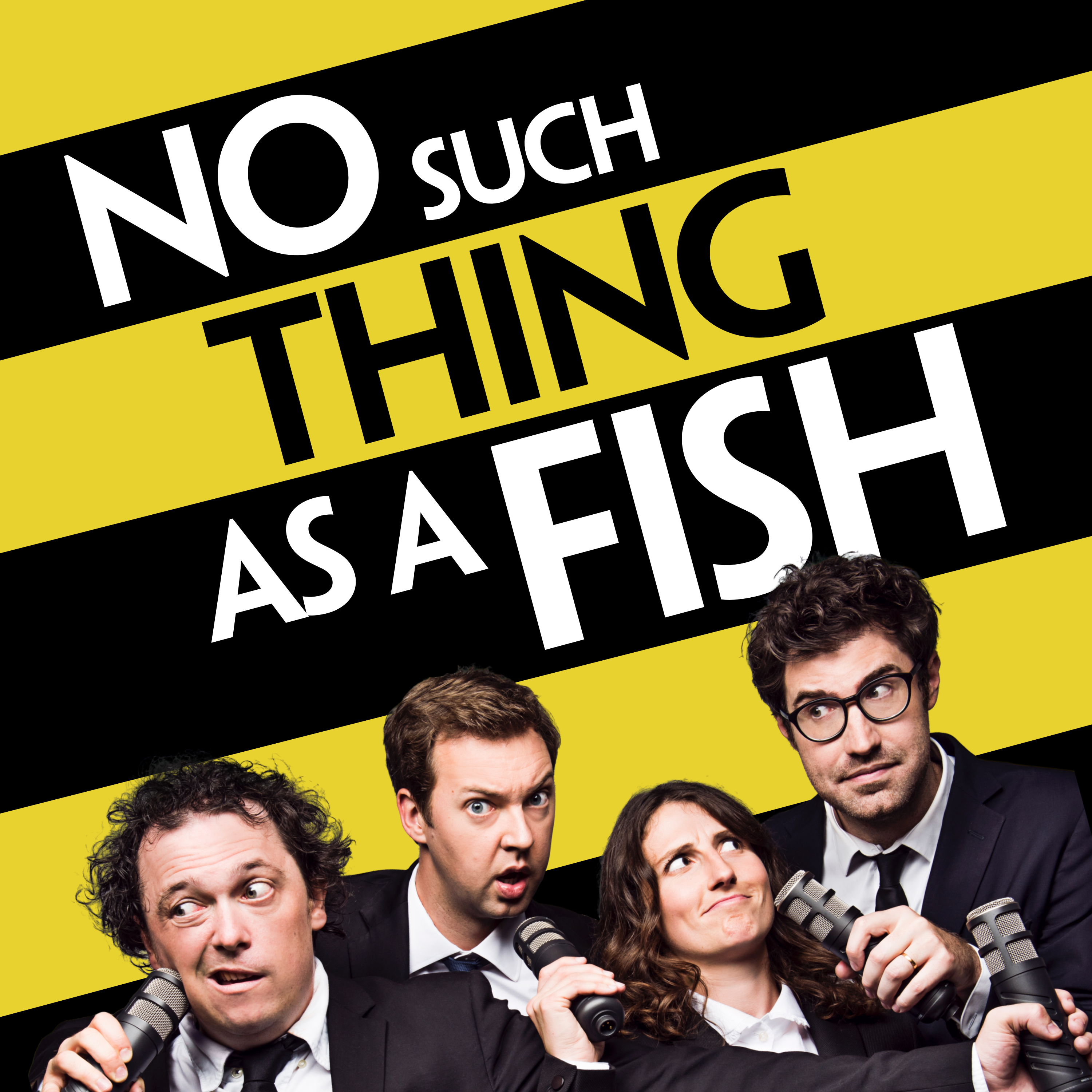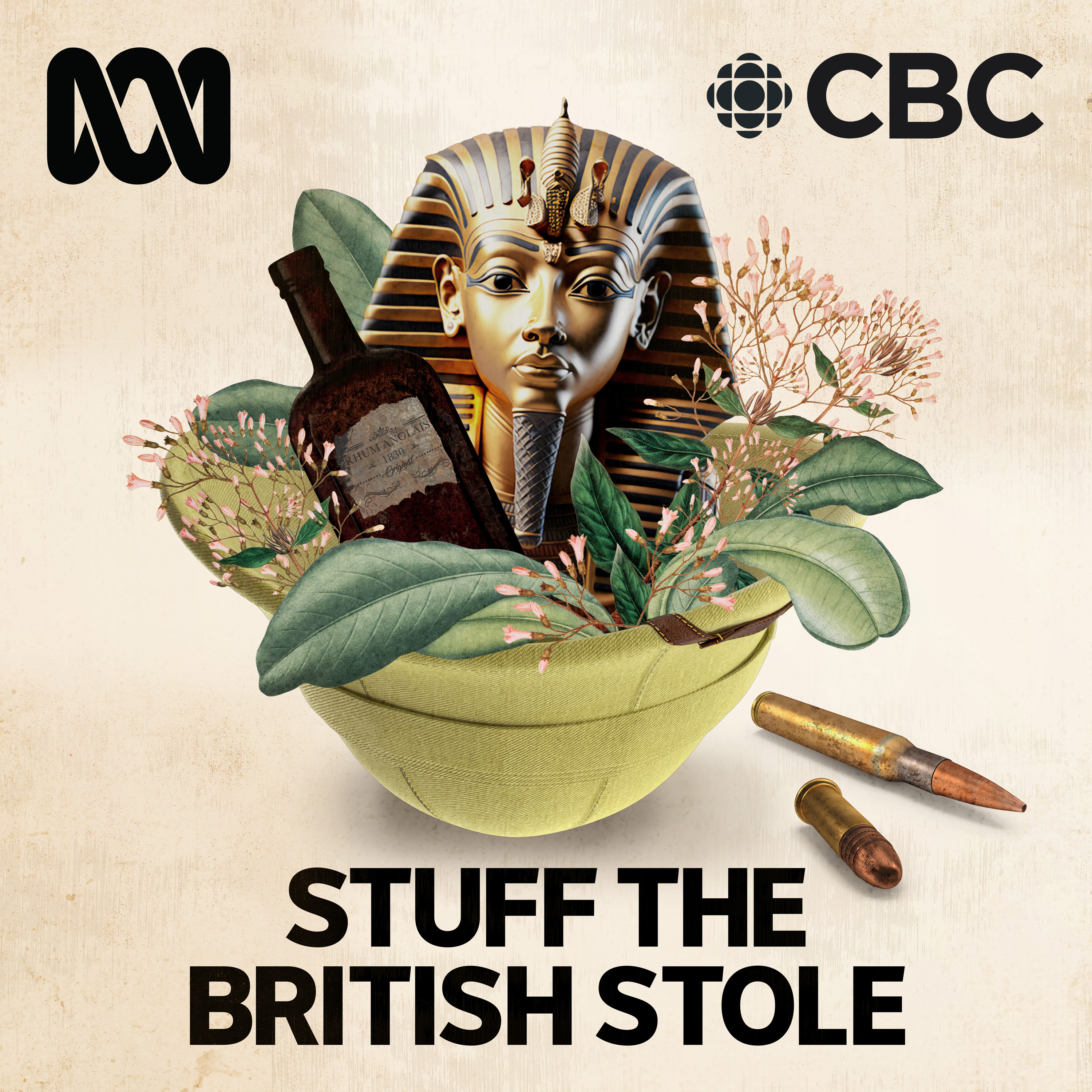
Piano, finally
Piano Finally is a podcast by an old bloke who is learning the piano, finally. I cover the process of learning the piano and music theory as an adult learner. I also review piano books, hardware and other materials from an adult learner's perspective.
Piano, finally
Episode 61 - When are we going to use this?
🎙 Episode 61 – When Are We Going to Use This?
Welcome back to Piano, Finally, where I share the ups, downs, and sideways detours of learning piano later in life. This week’s opening note: if you contact me via Buzzsprout’s FanMail, I can’t reply—so if you’d like a conversation, please send an email to david@pianofinally.show.
It’s Science Week here in NSW schools, and between showing science demos to preschoolers and heading out to a Bach-meets-acrobatics performance, I’ve also been keeping an eye on September’s Sydney Fringe Festival.
YouTube Spotlight – Ben Maton, The Salisbury Organist
The algorithm got this one right. Ben Maton’s channel features visits to rural British churches, telling their stories and playing their organs—sometimes linking the repertoire directly to the church’s history. Expect Elgar in his birthplace, Hans Zimmer’s Interstellar, and even Elvis. Ben also composes, writes for Choir & Organ magazine, and shares his broader work at benmatonmusic.co.uk.
Essay – When Are We Going to Use This?
In teaching (and learning music), the question often isn’t about the piece itself, but the skills learned along the way. Just as science lessons might quietly teach students how to follow instructions, beginner pieces like Amazing Grace teach note-reading, even if they’ll never be performed. The best reason to choose a piece is to develop a skill you’ll use later—something I kept in mind when selecting my latest repertoire with Devi.
Review – ANZCA Modern Pianoforte Preliminary – Series 2
This companion to last week’s classical book includes pop, rock, blues, and boogie pieces. I’ve chosen Tick Tock Blues (C major, staccato/legato), Sneak (E♭ major), and Blue Sky Boogie (mezzo staccato). Slightly simpler than the classical volume, but great for building targeted skills.
Book link | ANZCA shop
Progress
This week: Study in G (Müller), Tick Tock Blues (Hunter), and the descending scale from Riders on the Storm. Classical pieces recorded on the Kawai NV10 with Pianoteq 8; Riders on the Nord Stage 4 with My Keys To Music presets.
📬 david@pianofinally.show | 🌐 pianofinally.show
The contents of this podcast were entirely generated by a human. These show notes, however, were created by ChatGPT.
You can contact me:
- via email at david@pianofinally.show; this is probably the best option
- the show website, www.pianofinally.show
- Instagram and Threads @pianofinally
- and on YouTube
- all the podcast directories - list
- here's the RSS feed
Some of the links to books and other items mentioned in the podcast are affiliate links for Amazon or other providers. If you use one of these links, a commission may be paid to me at no additional cost to you. Thank you if you use a link.
All reviews of products, websites and services are unpaid, and no sponsorship has been received for any content on this podcast.
G'day everyone, I'm David Reedy. Welcome to Piano, Finally, a podcast by an old bloke who's getting around to learning the piano. Finally. Welcome to show 61. Thank you very much for listening. If this is the first time you're hearing a podcast, I hope you enjoy what's in the show. If you're back for another episode, then thanks for returning. If you too are learning a musical instrument, let me know how you're going with it. You can contact me at david at pianofinally.show There is another way to contact me, but it's not quite as effective as email. I use Buzzsprout to host the podcast. They provide the storage and download management, and the website. They also provide a fan mail link that will send me your text message. It's really simple to use, but it has one flaw There's no way I can reply to a message I get the message as a text But the return information is for Buzzsprout, not the sender I had a great message from a listener last week via fan mail But luckily, he followed up with an email So I could get back in touch So, by all means use fan mail if you want But I won't be able to reply Use email if you'd like a chat One of the other teachers at school bought himself and his family a keyboard to start learning the piano. It's been great having another beginner to talk with. Most of the other people at work learning an instrument are the students, and they're all more advanced than I am. I've lent him my copy of Stephen White's piano course, and he's finding the book and the videos quite useful. It's Science Week in NSW schools this week, and I'm spending Friday morning showing some three- to five-year-olds some cool science things. Then on Friday night, I'm going to see some acrobats accompanied by some Bach. That should be interesting. Also, the Sydney Fringe Festival is getting underway in September, and there will be many musical and other artistic shows happening. I'll put a link in the show notes in case you're looking for something to see. Sometimes the YouTube algorithm gets it right and suggests a video that is spot on. I'm pretty sure that this channel got suggested because the algorithm thinks all keyboards are the same so an organ channel is also suitable for a pianist. It doesn't matter why it suggested the Salisbury organist I've really been enjoying it. Ben Maton is a professional organist who graduated from Oxford University with a music degree. In addition to making YouTube videos, Ben also composes music and writes for Choir & Organ magazine. The main content of Ben's channel has him travelling around Britain, visiting rural churches and telling their stories and playing the organs. The newer videos on the channel are generally around half an hour long, which gives Ben the chance to go off on tangents in his stories. Often there is a connection between the music and the church. For example, you can hear Ben playing Elgar in his birthplace. It's not all classical music though. There are videos that include an arrangement of Hans Zimmer's Interstellar and even some Elvis. In the latest video on the channel that I have watched, how I became a professional organist in three years and then lost my job, Ben was at a church in Bramer, Hampshire a church which is over a thousand years old though the organ is newer Ben's not there to play the organ though his visit to the church leads into a story about his first job as a professional organist before he went off to university that was working as the organist for a funeral chapel Ben talks about how he got the job how he went about selecting music for the various parts of each service and how the job changed in the time he was away at Oxford. It's a great story about getting started as a musician, the importance of live music rather than records, and a bit about resilience when things change around you. Like all of Ben's videos, it's well put together and the music is lovely. Ben also has a website where you can see other aspects of his work, including suggestions for organ music for both weddings and funerals, separately, not combined. Ben also has a Patreon where you can support his work if you enjoy his videos. They really are a treat. One of the most common questions teachers get asked, particularly on a warm day after lunch, is, when are we going to use this? As a science teacher, it often comes up when we are looking at some seemingly irrelevant collection of information about a topic not of immediate concern to a teenager. Most of the time, I'll have a good reason for why we are going over the material in the lesson, but I must admit that sometimes the answer has to be, because the syllabus says so, which is not very satisfying. Often, the reason for covering a topic will only become clear after some time has passed. We teach chemical equations in junior science, so that students who pursue more science at university have a basic understanding before they arrive. For everyone else, the benefit is learning how to follow a standard procedure to achieve what initially seems to be a horribly complex result, a skill that is applicable well beyond science. Often the goal of looking at a topic is not so much for the topic itself, but for the skills that are needed along the way, skills that may well be applicable in other areas. I was a bit surprised when I found out that there are people who treat Lego like it's a puzzle. When I used to teach interface design, I often used Lego as an example of an excellent way to clearly get across a concept without using words. Similarly, the instructions that come with IKEA furniture. I realised that the problem wasn't that Lego was too mysterious, it was that some people had trouble following instructions. So many of the activities we do in science lessons are designed to give students practice at reading, understanding and following instructions. The underlying purpose behind the lesson. Applying this idea to learning music is not difficult. If I think about an ordinary practice routine, there are a number of places where the when am I going to use this question comes to the fore. This is especially the case when you're just starting out. But it's also the case that when you are first starting out, it's an easy question to answer. One of the first pieces I've seen in adult beginner books is Amazing Grace, a really simplified version of the hymn. Are you ever going to play this version in a performance? No, but that's not the point. Learning to match the written notes to the piano keys is the objective, and it's easy to see how that is going to be useful. There might be a couple of motivations behind learning a particular piece, and I'm going to suggest that one of them is better than the other. I've listened to a few piano teachers from Britain talking about piece selection, and one of the points they often stress is that the piece is in the current ABRSM examination syllabus. The piece should be chosen because it is in the syllabus, which I consider the least good reason for learning a piece or a science topic. I'm not sure whether the people who set the piano syllabuses are just picking pieces so the exam candidate can show that they have mastered a technique or because the piece is particularly good at teaching a method. But I have a suspicion it's the former. I think that when choosing repertoire pieces when you are learning, the first consideration should be that they will teach you something that you are going to need going forwards. A technique or a key that will be needed long after you've left grade 1 behind. That's the process Devi and I used when picking the latest set of pieces to work on. The first two both use combinations of staccato and legato, techniques that appear in nearly all piano music. I don't think I'll ever give a performance that includes Glenn R. Hunter's Tick Tock Blues, unless it's at the Students' Showcase, but I'm sure that there will be plenty of short, sharp notes if I ever do give a proper performance. The same reasoning accompanies other techniques that crop up in practice. No one is ever going to give a piano recital that includes playing the C major scale hands together, at least not seriously. So I don't think it is a goal to learn the scale simply for its own benefit. There are a number of YouTube pianists who will throw in a fast scale performance to show their prowess and encourage others to do likewise. But the point of learning a scale is to play the piece in that key competently, not to be able to race through it. Learning the scale is important, but not at a crotchet equals 240. Being at the beginning of my piano learning may mean that I have all this completely wrong. When I can play Beethoven's Wolstein Sonata or Chopin's Polonaise Fantasy, I might see the point of being able to play the A-flat major scale incredibly fast. But at the moment I see some practice suggestions in the same way as a bored student sitting in a warm classroom after lunch. and I'm not sure when I'll ever use them. I mentioned last week that I'm using the two ANZCA preliminary level books to supply the next six pieces to learn. Three of them are from the classical book which I reviewed last week and the other three are from this week's title, Modern Pianoforte Preliminary, Series 2. Like the classical book, the modern book starts with a section of scales for the preliminary level exams, which are the same as those in the classical book, so I won't repeat that here. Similarly, the end of the book contains the same material as in the classical title. The Series 2 books are the current versions, even though they are 20 years old. The business part of the book consists of 12 pieces, split up into three sections of four works. The three sections are Pop and Rock, Blues and Boogie. There represented in this title, there are four pieces by Jay Selman, three by Glenn R. Hunter, and two by Andrew Craggs. The remaining three pieces are by Robert Cairn, Ian Ladd, and the only woman represented, Yvonne Johnson. The four pop and rock pieces are in a variety of keys, F major, G major, and B flat major. All appear to be fairly straightforward, but I didn't choose any of them for my new repertoire. The first blues piece is Tick Tock Blues by Glenn R Hunter, one of the pieces I did choose. It's in C major and uses staccato and legato throughout, which is why I chose it. The next piece by Jay Selman uses swing and cut time. I chose the next piece, Sneak, by Ian Ladd, partly because it's in E-flat major, a key I haven't played in, so it's something new to learn. It's also a slightly longer piece. The last blues piece is Sweet and Blue by Andrew Craggs. The boogie section opens up with Train Line Boogie by Glenn R. Hunter. This piece is meant to sound like a train, and when Devi played it, it did. The boogie piece I have chosen is Blue Sky Boogie by Andrew Craggs. It has the score marked with Mezzo Staccato Throughout, so it should give me more practice with that technique. The last two pieces both involve a lot more chord playing than the earlier pieces. One interesting thing is that I think the pieces in this book are slightly simpler than those in the classical book. I could be wrong, of course, but the list two pieces in the classical book seem both more complex and longer than anything in this book. If you're looking for some pieces on the way to grade one, the ANZCA Preliminary Level Modern Pianoforte book is a good place to look. There are links in the show notes to the book and to the ANZCA shop. Coming up this week, I have two musical performances scheduled. I'm off to see Circa and the Art of the Fugue at the City Recital Hall on Friday and Radio Luxembourg with John Waters at the Joan in Penrith on Saturday. Both look very interesting. I'll report on them next week. If you'd like to contact me, email is the best way. You'll find me at david at pianofinally.show and the website at www.pianofinally.show In both cases, Piano, Finally is all one word. The show is also on Spotify and available as audio only on YouTube. You can subscribe via any popular iOS or Android podcast application or from directories such as Apple Podcasts, Spotify or YouTube. I also post an excerpt and link for each episode as an Instagram reel If you're learning an instrument, let me know where you are in your journey What's going well and what are the challenges? How are you managing your time? And so, until next week, I hope your piano stays in tune and you enjoy your time at the Keys This week I'm including three pieces Study in G by August Müller, Tick Tock Blues by Glenn R. Hunter, both of which I added with Devi, and the descending right-hand scale from the start of Riders on the Storm by the Doors. I'm also working on some improvisations, but they're not ready just yet. The classical pieces were recorded on the Kawai NV10, with Pianoteq 8 on the M4 Pro Mac Mini, emulating the Shigeru Kawai SKEX in chamber recording mode. Riders on the Storm is played on the Nord Stage 4 using the presets from My Keys To Music.
Podcasts we love
Check out these other fine podcasts recommended by us, not an algorithm.

Connected
Relay
Upgrade
Relay
No Such Thing As A Fish
No Such Thing As A Fish
We Can Be Weirdos
Global
Stuff The British Stole
ABC and CBC
The iDeveloper Podcast
Steve Scott (Scotty) & John FoxRaven On: A Pop Culture Podcast
Natalie Bochenski & Stuart Layt
Smart Enough to Know Better
Dan Beeston & Greg Wah
TopMusic Piano Podcast
Tim Topham
The Chopin Podcast
Garrick Ohlsson and Ben Laude


